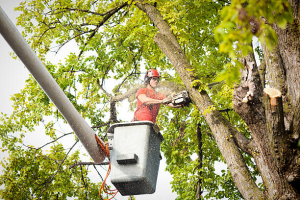Clearing rubbish doesn’t have to feel overwhelming or messy anymore. Evolving techniques have made cleanup more efficient. New approaches are changing the way waste is handled. Demolition now comes with smarter, cleaner systems in place.

Most rubbish removal efforts today focus on reducing environmental damage. Sorting systems help minimize what goes to landfills. Workers are trained to identify reusable materials fast. Efficiency is at the core of current practices. Click Here to learn more.
Smart demolition techniques are also becoming more common in the industry. Machines are programmed for precision tearing down. This lowers the risk of damage to nearby property. It also helps save time and labor costs.
Green strategies are being adopted in both fields. Bio-safe disposal is a key part of modern waste work. Materials like wood and glass are often recycled on the spot. This prevents unnecessary trips to dumping sites.
Tech-driven sorting is a growing trend in rubbish removal. Conveyor systems now assist in sorting recyclable waste. This saves time while reducing error rates. It also keeps workers safer by limiting exposure.
Old buildings are being assessed before demolition begins. Materials are categorized into reusable, recyclable, or disposable. This minimizes waste and boosts sustainability goals. It also saves money in future construction plans.
Noise reduction is a growing concern during teardown. Companies now use quieter machinery for residential jobs. Sound barriers are placed to shield nearby homes. This change helps maintain community peace.
Mobile apps now allow customers to book junk pickups easily. Users select the waste type, location, and time. This adds convenience and speed to the service. It also helps streamline staff scheduling.
Demolition teams now rely on 3D mapping software. It allows for better planning before the first swing. Risky sections are noted ahead of time. This leads to fewer structural surprises mid-job.
Deconstruction is the more surgical cousin of demolition. Instead of destruction, it focuses on carefully taking things apart. Materials like brick, timber, and copper are salvaged. This creates value from what once was rubble.
Safety has always been central to demolition efforts. Now it’s elevated with smart gear and AI alerts. Sensors can detect harmful dust and chemicals. This protects workers and nearby residents.
Eco-dumpsters are rising in popularity for small rubbish jobs. These bins come with built-in separation compartments. Users sort their waste before pickup even arrives. It simplifies the recycling process at the backend.
Robots are also playing a role in both fields. Some can handle dangerous or repetitive tasks. They speed up demolition while reducing injury risk. Remote control adds another safety advantage.
New materials now pose new demolition challenges. Engineered panels, composites, and adhesives require special tools. Standard gear doesn’t always do the job cleanly. Training and tool upgrades are part of the solution.
Digital tracking is changing how junk is managed. Every load has a traceable journey from pickup to final stop. This transparency helps clients understand the impact. It also reduces illegal dumping incidents.
Partnerships are growing between demolition and recycling firms. Coordination between them improves material recovery. Fewer items end up in landfills or incinerators. This joint system benefits the planet and saves cash.
Permitting has been streamlined in many places. Online systems now allow faster approval for projects. This cuts down delays for both rubbish removal and demolition. It also ensures better regulatory compliance.
Light demolition is trending in DIY communities. People are tearing down walls and sheds on their own. Tutorials help make this safer and more effective. Cleanup services often follow to handle the mess.
Waste analytics tools are now offered to large clients. These platforms give reports on waste types and volume. Companies use this to refine future building strategies. It promotes cost efficiency and better planning.
Hazardous waste handling remains a specialist domain. Teams must be certified to manage chemicals or asbestos. They follow strict steps for containment and disposal. Regulations ensure public and worker health.
Pop-up recycling centers now assist in community cleanups. They appear temporarily for bulk waste drop-offs. Residents bring old furniture, electronics, and yard waste. This keeps neighborhoods cleaner year-round.
Interior strip-outs are now done before major demolition begins. These pre-demolition phases are vital for sustainability. Items like carpets, wires, and fixtures are carefully removed. This makes the later teardown smoother.
Demolition dust is now captured using misting systems. These spray fine water particles during the job. The mist traps dust and prevents air pollution. It’s simple but highly effective.
Construction debris accounts for major waste volume worldwide. Reusing bricks and metal frames offsets that amount. Salvaged materials also cut down on future building costs. Clients love the savings and reduced carbon footprint.
Education is expanding within both industries. Workers now receive detailed training in material recovery. Online courses keep them up to date with laws. Knowledge builds stronger and safer teams.
Cultural sites now require sensitive demolition. Heritage specialists assess what must be preserved. Demolition crews must adjust methods accordingly. This ensures respect while enabling progress.
Junk hauling companies now offer same-day services. Speed is a growing priority for clients. Businesses want minimal downtime during renovation. Residential customers want clutter gone fast.
Digital photos are used for pre-removal documentation. They capture conditions before any work begins. This prevents future disputes or misunderstandings. It also ensures job accountability.
Modular building components are also changing demolition. These parts can be detached and reused quickly. It shortens the project timeline significantly. It also results in less debris overall.
Community engagement matters more in demolition projects. Neighbors are notified of schedules in advance. Questions are answered to ease concerns. This promotes goodwill and reduces conflict.
Insurance companies are involved from day one. They evaluate risks and approve coverage levels. This provides financial security for all sides. It also protects against unexpected delays.
Remote consultations are now offered by junk removal teams. Clients show their clutter using live video chats. Professionals assess and quote without visiting. This saves time and improves scheduling.
Event cleanups are now a growing service area. After large gatherings, rubbish removal teams step in. They handle food waste, packaging, and temporary setups. It restores the venue fast.
Custom truck fleets help meet varied rubbish needs. Some are built for furniture, others for yard clippings. This specialization boosts speed and lowers labor. It also increases customer satisfaction.
Transparent pricing is being emphasized by service providers. Hidden fees are being phased out. Clients now get itemized breakdowns ahead of time. This builds trust and repeat bookings.
Old concrete is now being crushed and reused. It becomes the base for new construction work. This process reduces the demand for new gravel. It’s a perfect loop in sustainable building.
Post-demolition sites often need grading or leveling. Companies now bundle these services in their offer. Clients prefer all-in-one solutions over multiple contractors. It shortens timelines and simplifies billing.
Mini dumpsters are now popular for small property cleanouts. These bins are easy to place in tight spaces. They cater to homeowners doing minor renovations. It’s a more affordable option.
Heavy equipment now includes real-time GPS tracking. Supervisors can monitor movement and usage hours. It helps optimize project planning and fuel use. Theft prevention is also a bonus.
Tiny home movements are influencing rubbish removal too. Smaller living means frequent decluttering. Pickup services are adapting with smaller load pricing. It’s a more affordable solution for minimalist lifestyles.
Interior demolition methods now include dry ice blasting. This technique removes coatings without damage. It’s non-toxic and leaves minimal mess. It works well in delicate or historic buildings.
Customer reviews shape the direction of services. Positive feedback boosts visibility and trust. Negative ones push companies to adapt quickly. This feedback loop drives constant innovation.
Materials like drywall and insulation are now being repurposed. Once considered junk, they’re now part of circular systems. Processing methods are being developed for them. It’s a win for sustainability.
Rubbish removal is starting to merge with donation services. Items in good condition are redirected to shelters. It turns waste into goodwill. This also improves a company’s public image.
Drones now scan large demolition sites. They provide aerial views to aid in planning. This helps identify problem areas before work begins. It saves time and reduces costs.
Rubbish removal and demolition have evolved far beyond brute force. Precision, technology, and sustainability define the new era. These changes improve efficiency and reduce harm. The future looks cleaner and smarter.








